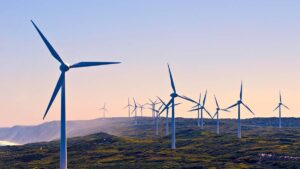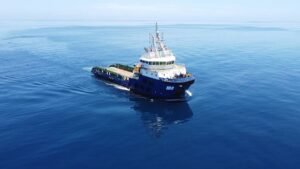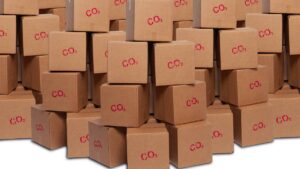Power Up: Renewables are hammering down electricity prices

Electricity prices have been driven down by renewables. Pic: via Getty Images
The Australian Energy Market Operator’s (AEMO) latest Quarterly Energy Dynamics report has clearly highlighted how higher renewable energy output has put downward pressure on wholesale electricity prices.
Along with lower volatility and improved electricity generation availability, wholesale electricity prices in the National Electricity Market (NEM) averaged $108 per megawatt hour (MWh) in the June quarter, down 59% from the record high quarterly price of $264/MWh set in the second quarter of 2022 though still up 31% from the March quarter.
Broken down to a state-by-state basis, New South Wales had the dubious honour of having the highest wholesale electricity prices in the NEM of $137/MWh whilst Tasmania enjoyed wholesale prices of just $64/MWh – cue laughter from Stockhead’s Tasmanian-based chief editor.
Victoria paid $89/MWh while South Australia and Queensland were just behind NSW at $124/MWh and $126/MWh respectively.
“Increased market share of lower marginal-cost renewables helped push down the wholesale electricity cost from Q2 2022, despite this quarter having the highest Q2 underlying demand recorded since 2016,” AEMO executive general manager reform delivery, Violette Mouchaileh said.
She added that rooftop solar generation increased 30% from Q2 2022, which reduced electricity demand from the grid while renewables increased their market share with rooftop solar up 1.8%, wind by 1.6% and grid-scale solar by 1.4%.
Unsurprising, given Australia has the highest per capita uptake of solar in the world according to Solar Citizens.
Fossil fuels dip and WA sees record electricity prices
By contrast, gas fell by 3.2% while black coal was down 0.6%. Incidentally, hydropower saw its market share fall 1.2%.
In line with the fall in gas’ market share, gas prices averaged $14.20 per gigajoule, down substantially from last years’ record of $28.39/GJ though it still represents the second highest Q2 gas price.
Gas supply from the fields connected to the Longford Gas Plant in Victoria decreased by nearly 25 petajoules, though this was offset by a 11.3PJ increase in gas supply from Queensland.
Western Australia, which is unconnected to the rest of Australia, recorded an all-time record high weighted average Balancing Price of $113/MWh in Q2 2023, along with a new Q2 maximum operational demand record of 3,652 MW.
“The WEM (Wholesale Electricity Market) experienced price increases due to a reduction in energy availability, mostly coal-fired and wind generation, and high demand due to cold temperatures during the quarter,” Mouchaileh said.
“Specifically in June, AEMO forecast multiple lack of reserve conditions due to forced outages of scheduled generators and low wind conditions, resulting in only two-thirds of the total installed generation capacity being available for dispatch,” she said.
Continuing trend?
Is this likely to be a continuing trend?
Climate Energy Finance director Tim Buckley certainly thinks it is possible but that more needs to be done.
“Application approvals of new zero-emissions replacement capacity in financial year 2023 trebled to 7 gigawatts (GW) vs the previous two years, but we are still not seeing grid transmission and planning access bottlenecks removed,” he added.
“There is a record 30GW of new renewable energy capacity now in the connection pipeline, but just 3GW was completed in financial year 2023.
“We need to see the rate of completions double to replace end-of-life coal power station capacity inevitably and predictably coming offline.”
He added that rather than extending the life of coal-powered power plants, Governments needed to invest in and expedite the buildout of solar, wind, storage and grid transmission.
“This will put permanent downward pressure on prices, relieving cost of living pressures smashing Australians.’’
Buckley makes a good point. Renewable energy has already made an impact on lowering electricity prices and there’s every reason to believe that it will continue doing so.
But there’s only so much extra capacity that can be achieved using rooftop solar, meaning that grid-scale projects would be required to keep the momentum up as we progress towards net zero emissions.
Renewables stumble
This is especially important as not all renewable projects will make it across the line.
Canadian gas giant Atco has dropped plans for a 10MW green hydrogen project that would use power from Bright Energy’s 180MW Warradarge wind farm in Western Australia to produce 4.3 tonnes of green hydrogen a year.
The project was scrapped due to the company saying that transporting hydrogen to points where it could be injected into the gas network was not viable.
However, it noted that it is still green hydrogen could be delivered if the electrolysers are located closer to heavy industry where the gas can be used.
Atco has also put a proposed pumped hydro project near Bathurst on hold while it seeks clarity over the state government’s policy frameworks and there’s a clear commercial pathway for large civil projects.
There’s also opposition from groups such as the NSW Farmers who have called for a temporary ban on the construction of new large-scale solar farms in the state, claiming that developers are not acting in the long-term interests of regional communities.
Related Topics
UNLOCK INSIGHTS
Discover the untold stories of emerging ASX stocks.
Daily news and expert analysis, it's free to subscribe.
By proceeding, you confirm you understand that we handle personal information in accordance with our Privacy Policy.








